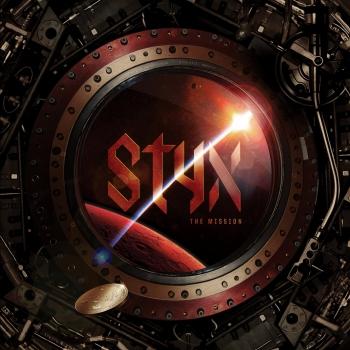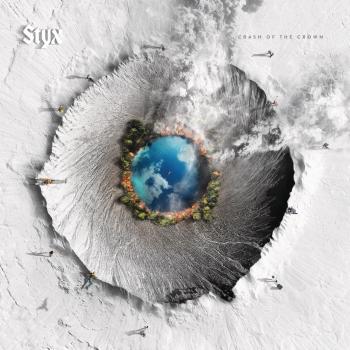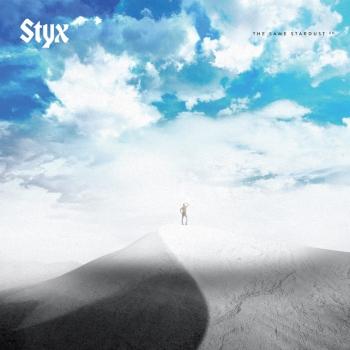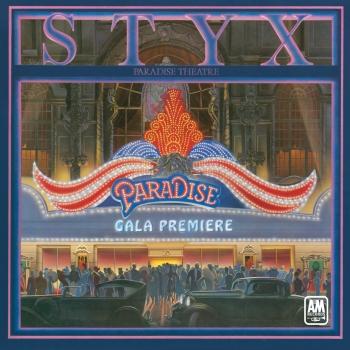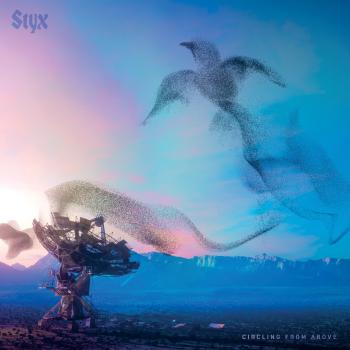Styx
Biography Styx
Styx
This Chicago, Illinois, USA-based quintet is widely believed to be responsible for the development of the term pomp-rock (pompous, overblown arrangements, with perfect-pitch harmonies and a very full production).
Styx evolved from the bands Tradewinds and TW4, but renamed themselves after the fabled river from Greek mythology, when they signed to Wooden Nickel, a subsidiary of RCA Records, in 1972. The initial line-up comprised Dennis DeYoung (18 February 1947, Chicago, Illinois, USA; vocals/keyboards), James Young (b. 14 November 1949, Chicago, Illinois, USA; guitar/vocals), Chuck Panozzo (b. Charles Salvatore Panozzo, 20 September 1948, Chicago, Illinois, USA; bass), John Panozzo (b. 20 September 1948, Chicago, Illinois, USA, d. 16 July 1996, Chicago, Illinois, USA; drums) and John Curulewski (b. 3 October 1950, USA, d. February 1988; guitar). Combining symphonic and progressive influences they released a series of varied and highly melodic albums during the early 70s. Success was slow to catch up with them; Styx II, originally released in 1973, spawned the Top 10 Billboard hit "Lady" in 1975. The album then made similar progress, eventually peaking at number 20.
After signing to A&M Records in 1975, John Curulewski departed with the release of Equinox, to be replaced by Tommy Shaw (b. 11 September 1953, Montgomery, Alabama, USA). This was a real turning point in the band's career as Shaw took over lead vocals and contributed significantly on the writing side. From here on Styx albums had an added degree of accessibility and moved towards a more commercial approach. The Grand Illusion, released in 1977, was Shaw's first major success, peaking at number 6 during its nine-month stay on the Billboard album chart. It also featured the number 8-peaking single, "Come Sail Away". Pieces Of Eight (1978) and Cornerstone (1979) consolidated their success, with the latter containing "Babe", the band's first number 1 single in the USA. Paradise Theatre (1981) was Styx's tour de force, a complex, laser-etched concept album, complete with elaborate and expensive packaging. It generated two further US Top 10 hits in "The Best Of Times" and "Too Much Time On My Hands". The album became their most successful ever, and also stayed at number 1 for three weeks on the US album chart. With DeYoung pushing for a more theatrical approach, Kilroy Was Here (1983) followed, yet another concept album that brought them close to repetition. A watered-down pop rock album with a big-budget production, its success came on the back of their previous album rather than on its own merits. Caught In The Act (1984) was an uninspired live offering and they disbanded shortly after its release. DeYoung and Shaw both recorded solo albums, with the former enjoying a US Top 10 hit in 1984 with "Desert Moon".
Styx re-formed in 1990 with the classic line-up, except for pop rock funkster Glenn Burtnick aka Glen Burtnik (b. USA), who replaced Tommy Shaw (who had joined Damn Yankees). Edge Of The Century indicated that the band still had something to offer, with a diverse and classy selection of contemporary AOR, including the Top 3 hit "Show Me The Way". As one of the tracks on the album stated, the band was self-evidently "Not Dead Yet". Following a US tour to promote the album, the band members once again went their separate ways. They reunited in 1995 to promote a compilation album, with Shaw back on board but without the ill John Panozzo (he passed away in 1996 due to alchohol related problems). Todd Sucherman (b. 2 May 1969, USA) became a full-time member on the Return To Paradise tour. Chuck Panozzo and Dennis DeYoung both left following the recording of Brave New World (1999), with the former announcing he was HIV positive and inter-band tension making the latter's presence no longer sustainable. DeYoung has continued to play Styx music as a solo artist. Lawrence Gowan (b. 22 November 1956, Glasgow, Scotland; keyboards/vocals) was brought in to replace DeYoung, and Burtnick returned to cover for Panozzo.
Styx has continued on the nostalgia circuit into the new millennium and continues to sell large numbers of albums, as demonstrated by the high-charting covers set Big Bang Theory in 2005. The album featured new bass player Ricky Phillips. (Source: bettyloumusic.com)










